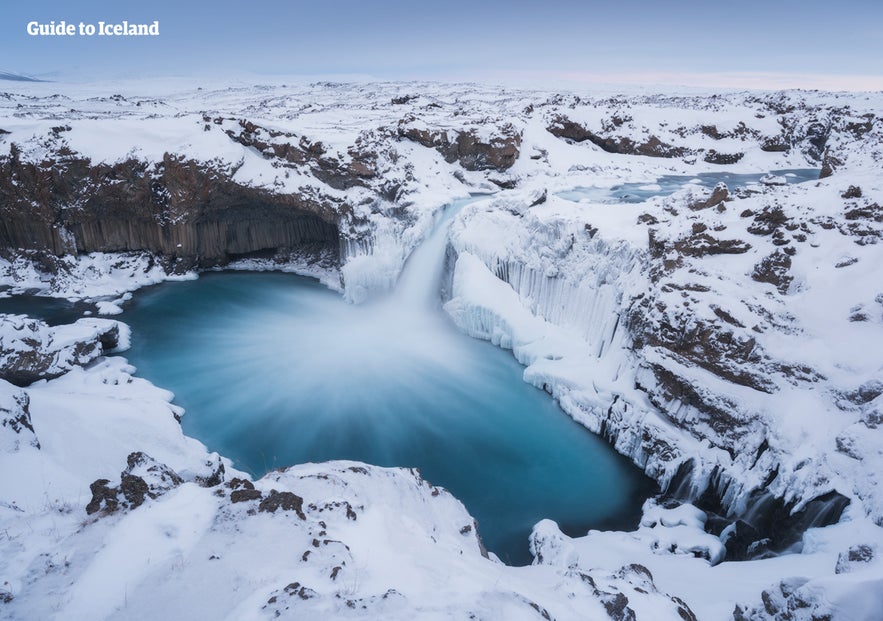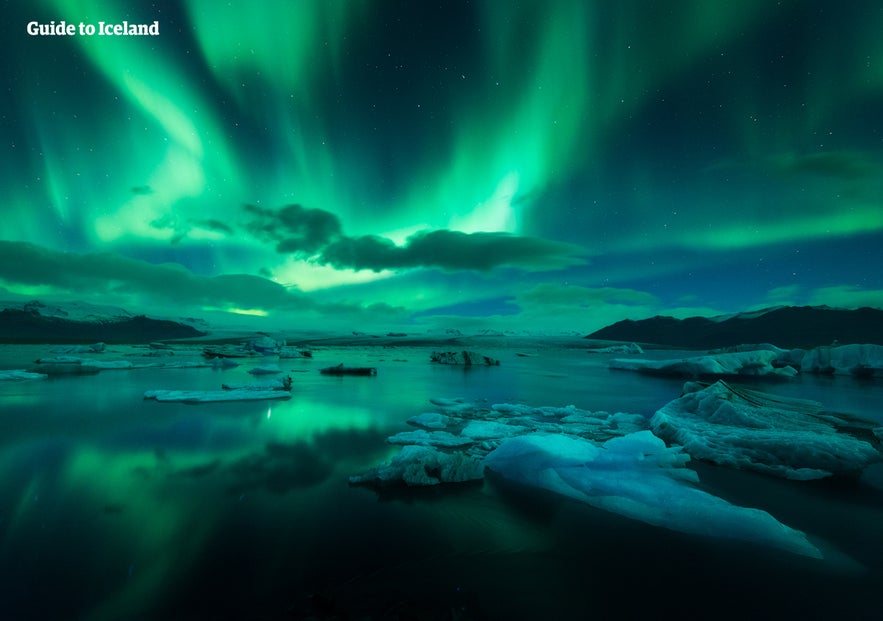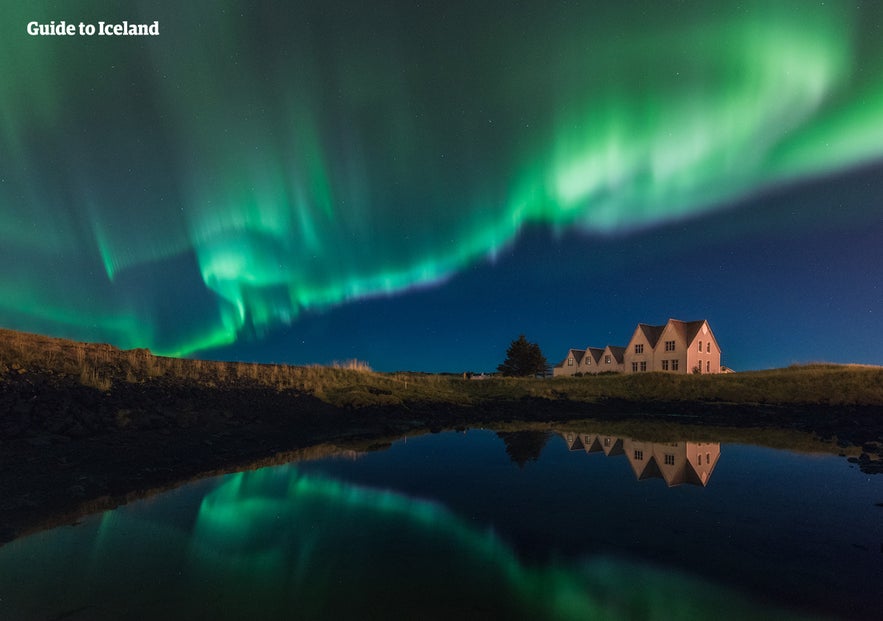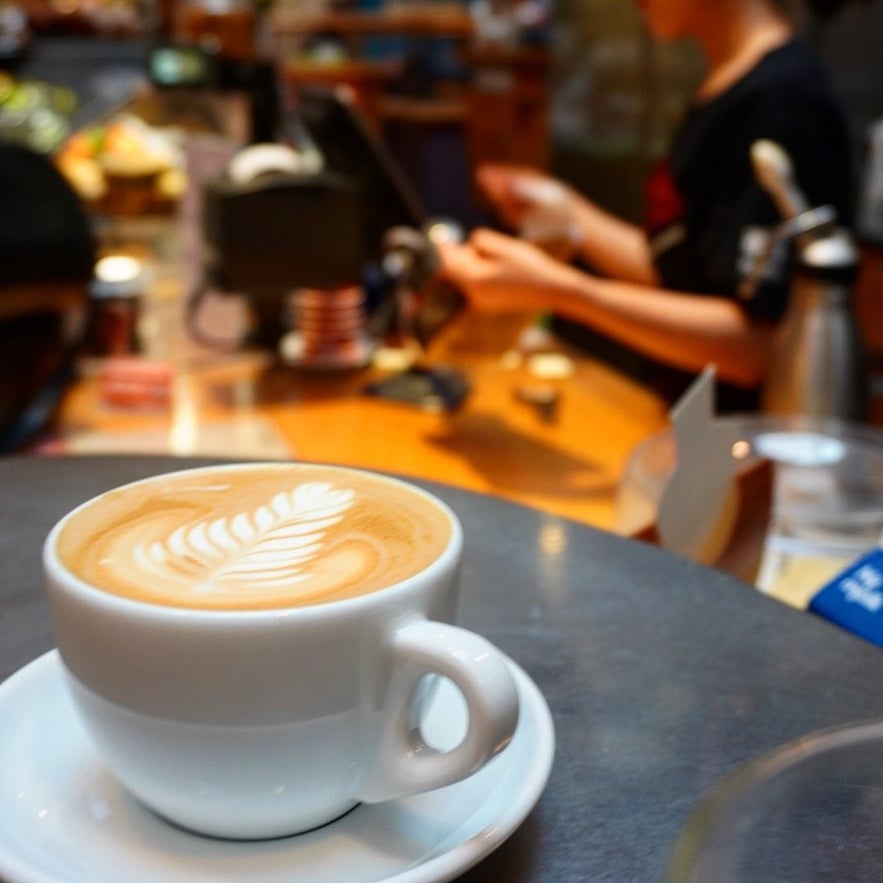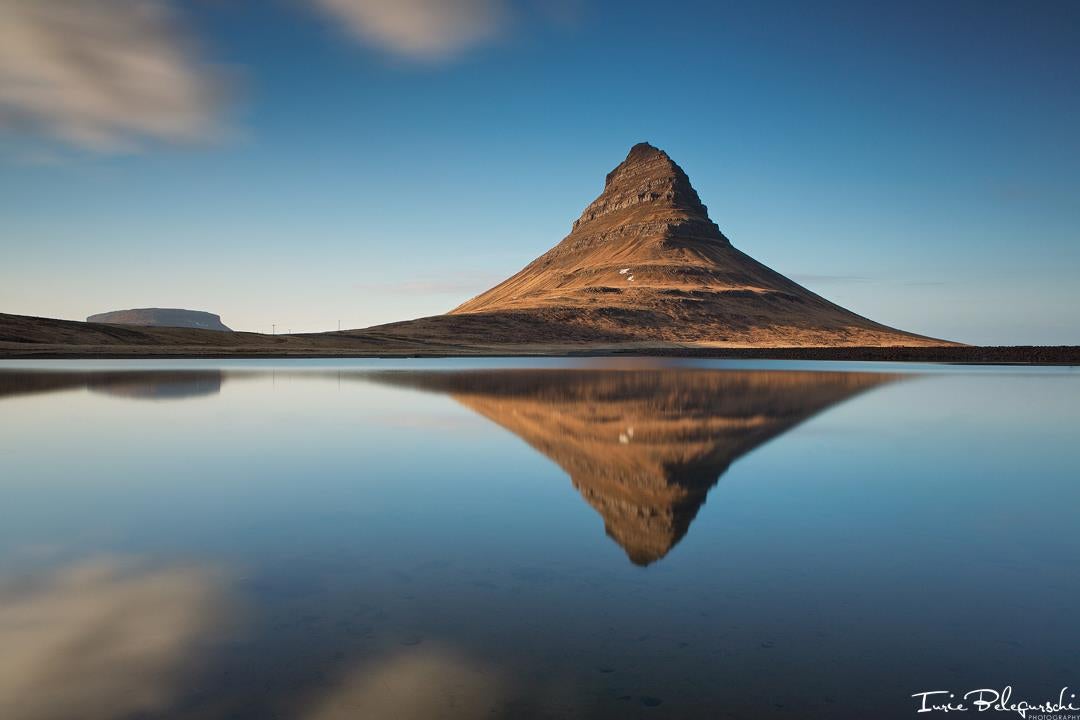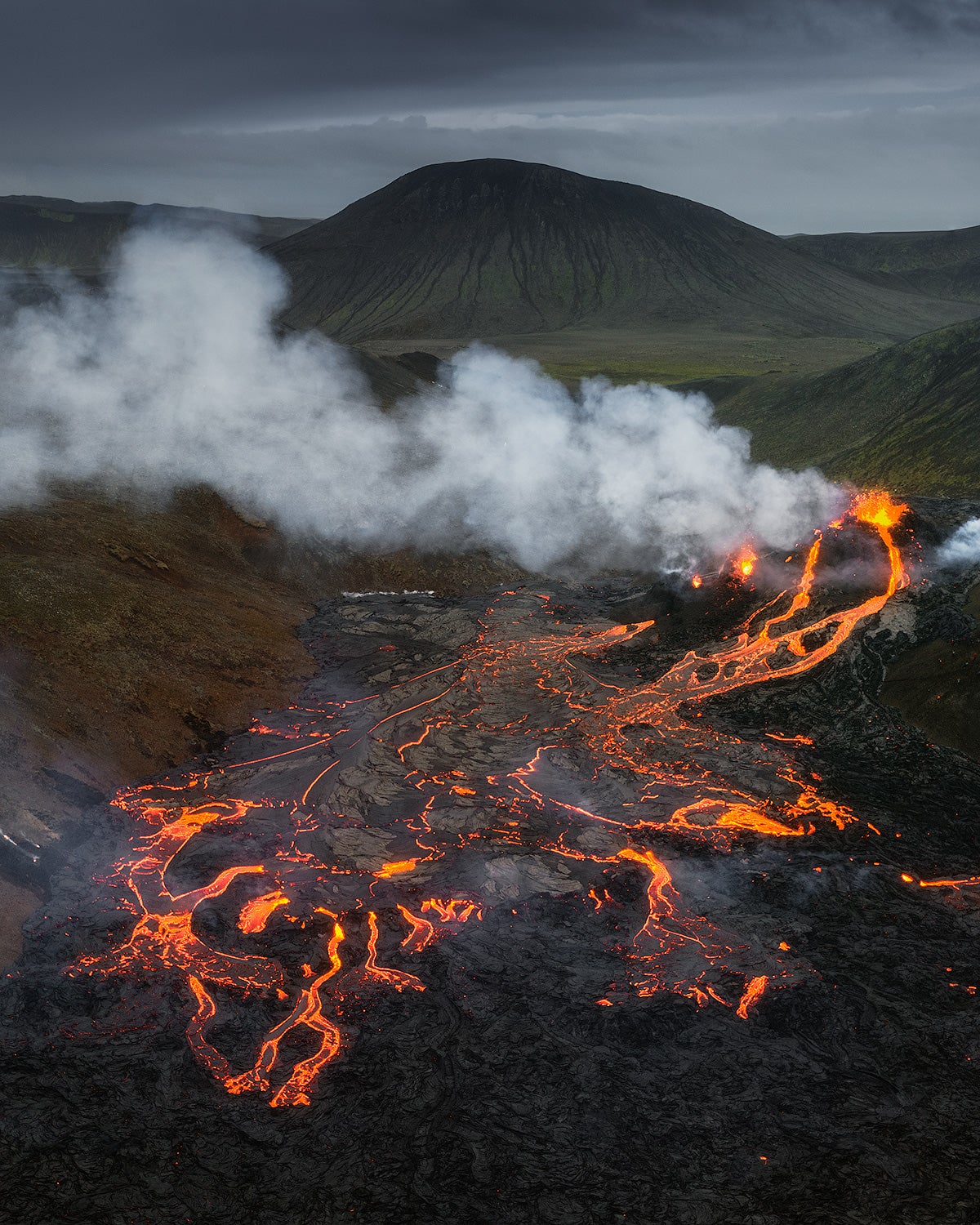November is a fantastic time to experience winter in Iceland, perfect for adventurous outdoor activities like ice caving, snowmobiling, or glacier hiking. There is a wide variety of November tours you can embark on, from exploring crystal-blue ice caves to unwinding with relaxing hot spring visits.
With the solar maximum at its peak in 2025–2026, November also offers one of the best chances to experience the northern lights in Iceland.
Why You Can Trust Our Content
Guide to Iceland is the most trusted travel platform in Iceland, helping millions of visitors each year. All our content is written and reviewed by local experts who are deeply familiar with Iceland. You can count on us for accurate, up-to-date, and trustworthy travel advice.
Before you pack your bags, let’s answer a few key questions: What’s the weather like in Iceland in November? Can you go on a self-drive tour of the Golden Circle in November? Is Iceland expensive at this time of year? We’ll also share tips on tours, activities, and practical travel advice.
Here’s everything you need to know about visiting Iceland in November.
Key Takeaways: Visiting Iceland in November
-
November in Iceland brings cooler temperatures, limited daylight, and lower travel costs compared with summer.
-
The northern lights are visible in November, along with top winter activities like ice caving and snowmobiling.
-
Popular attractions such as the Blue Lagoon remain open, though some remote areas and highland roads may be closed.
-
Renting a car for a self-drive holiday is possible, but winter conditions can make guided tours or organized transport safer.
-
Dressing in layers, including thermals, waterproof jackets, and warm accessories, is essential for November in Iceland.
November Weather in Iceland
There's a saying in Iceland: If you don't like the weather, just wait five minutes. It sounds funny, but there's definitely some truth behind it. Iceland's weather can vary hugely at any time of year and is very unpredictable.
The same can be said of the weather in Iceland in November, which can shift rapidly. Some days can be warm and dry, others wet and chilly, and others snowy and cold. With that said, compared with other winter months, November tends to be a little more stable, making it an excellent time to visit Iceland.
Temperature and Daylight Hours in Iceland in November
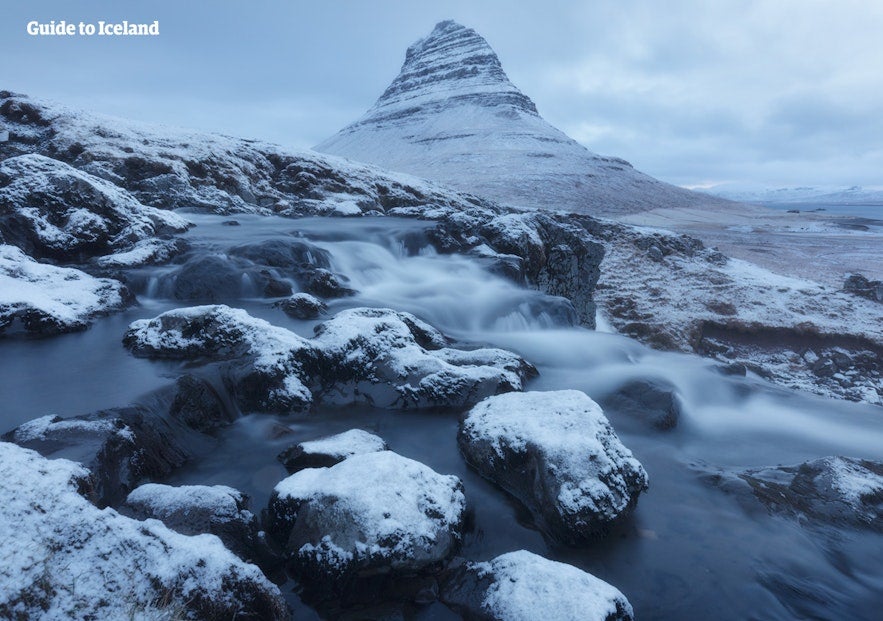 In November, the average temperature in Iceland's capital, Reykjavik, hovers between a brisk 33 F and 46 F (between 1 C and 8 C). Outside the city, temperatures tend to drop even lower, particularly in places like North Iceland.
In November, the average temperature in Iceland's capital, Reykjavik, hovers between a brisk 33 F and 46 F (between 1 C and 8 C). Outside the city, temperatures tend to drop even lower, particularly in places like North Iceland.
November also sees more cloud cover across the country than earlier in the year, rising from 66% to 72% likelihood.
It's also worth remembering that in November, there are only so many hours in the day—literally! Early November still has around eight hours of daylight each day, but that reduces fairly quickly over the course of the month. From November 16 onward, the sun doesn't rise until 10 AM, and it sets at 4 PM.
By late November, daylight hours drop even further; on the last day of the month, there are only five hours of daylight.
These limited daylight hours are a lot to get used to if you're unaccustomed to it, but that doesn't mean you can't get out and enjoy yourself. Plan your time wisely, and you should be able to do everything you want during your trip. If you're hoping to catch the northern lights, you could even view the limited daylight hours as a plus. The more hours of night skies, the more likely you are to see the aurora in action!
Rain, Snow, and Sleet in Iceland in November
Precipitation levels in Iceland are on the rise in November. Reykjavik usually sees around 3.4 inches (8.7 centimeters) of snow during November. This is six times more than in October, but still only half as much as usually falls in December. Rain, sleet, and hail are also typical during November, so make sure you dress accordingly. Thermals and a warm jacket are essential!
It's important to take extra safety precautions, as high levels of rain and snow can easily cause hazards.
To combat these hazards, Iceland's mountain roads (known as "F roads") are closed to all traffic. This is due to the potential for avalanches, the instability of the terrain, and the chance that roads might be blocked on the way back, leaving a vehicle and its passengers stranded.
Remember, venturing up closed roads independently is strictly illegal, and it's very unsafe. The fines for driving on a closed road are enormous, and you could end up stranded in the wilderness. Car rentals in Iceland can also monitor if their cars are driven outside of legal parameters, so you might face a hefty fine when returning the car. Whatever you do, don't put yourself at risk.
If you want to visit a certain place but can't find an accessible route, consider booking a tour instead of driving yourself. Tour operators have both the experience and heavy-duty vehicles needed to safely traverse the rough terrain.
- Check out this guide on how to drive safely in Iceland
Things To Do in November in Iceland
Despite the slightly unpredictable weather conditions, November is a wondrous month! Winter's arrival brings with it the possibility to try out ice- and snow-related activities, but the wintry conditions haven't become too severe, and the southern parts of the Ring Road are usually easily accessible.
Here is a round-up of the top things to do in Iceland in November.
Visiting Ice Caves in November in Iceland
The most popular winter activity in Iceland is taking ice cave tours. Stepping inside one of these incredible caverns, the pale-blue ice glittering around you is dreamlike. Don't forget your camera!
The ice caves in Iceland are formed by water melting within glaciers. Each year, new caves and networks form, so every visit offers something unique.
However, ice caving is a specialized activity that requires a tour operator. You can't go caving without a tour guide. Tour operators ensure you're safe and provide you with all the equipment you'll need for your descent, including crampons and a helmet.
For this ice caving season in Iceland, the highlight is a crystal blue ice cave tour in Vatnajokull, Europe’s largest glacier. This natural wonder features vivid shades of blue and intricate ice formations shaped by centuries of glacial movement. The cave you visit is carefully selected by your guide based on safety and weather conditions, ensuring the best possible experience during your tour.
Your adventure begins at the iconic Jokulsarlon Glacier Lagoon and continues with an exciting ride across the glacier in a specially equipped vehicle before stepping inside the crystal blue ice cave.
Once inside, you’ll be surrounded by towering ice walls, shimmering textures, and magical light filtering through the ice—perfect for photography and an unforgettable memory of ice caving in Iceland in November.
Visiting Iceland's Golden Circle in November
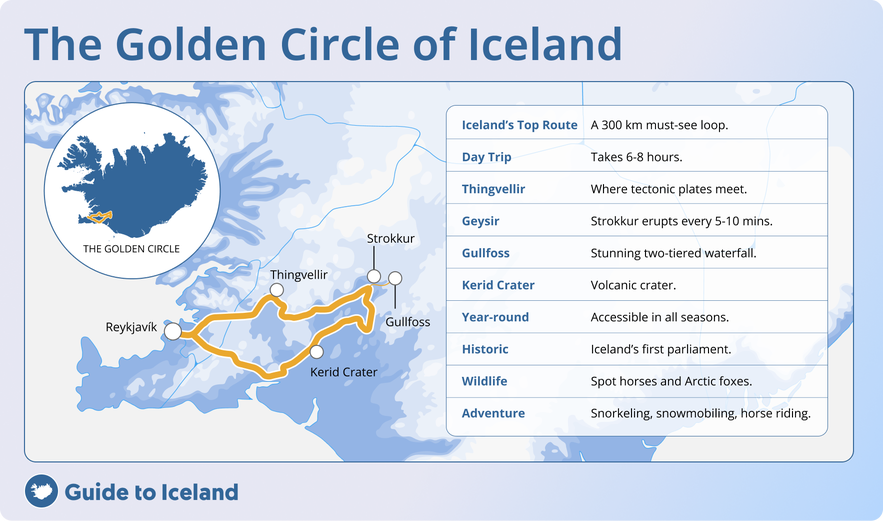
It's possible to visit all three of these spectacular sights in November, whether you want to go on self-drive tours or organized Golden Circle tours. If you plan to drive the route yourself, make sure you rent a car that's well-equipped for wintry road conditions, such as 4X4s Jeeps or SUVs.
Driving in Iceland in November is best approached with careful planning and a well-equipped vehicle.
If you aren't confident driving in the winter, there are several tours from Reykjavik that can take you to all three sights. You can try a one-day trip like this Golden Circle tour, which includes snowmobiling, or a multi-day tour like this three-day Golden Circle and South Coast tour with ice caving and glacier hiking.
- Find out more with the Ultimate Guide to Iceland's Golden Circle
- Choose the perfect vehicle for your trip with the Best Guide to Rental Car Sizes in Iceland
Admiring the Northern Lights in November in Iceland
November in Iceland is one of the best times to go on northern lights excursions because of the steady decrease in the number of daylight hours. As the days get shorter, the likelihood that you'll spot the northern lights dancing in vivid greens, purples, whites, and yellows increases.
It's a good idea to travel out of the city, as this will help you avoid light pollution and increase your chances of spotting the lights even more. The best way to do that is to take a northern lights tour with a transfer from Reykjavik and into the countryside.
You can also stay in accommodation just outside city limits, as there are plenty of northern lights hotels to choose from.
Having said that, it is possible to spot the aurora from Reykjavik in November. There are a few quiet corners of the city where the lights are more likely to be visible. Some of the best places to see the northern lights in Reykjavik include Klambratun Park and Grotta Lighthouse.
Before booking a tour or driving out on your own, you should routinely check the aurora forecast on the Icelandic Meteorological Office website. It provides information on the aurora’s intensity, potential cloud cover, and the best times and places to see the northern lights in Iceland.
Photographing the Northern Lights in November in Iceland
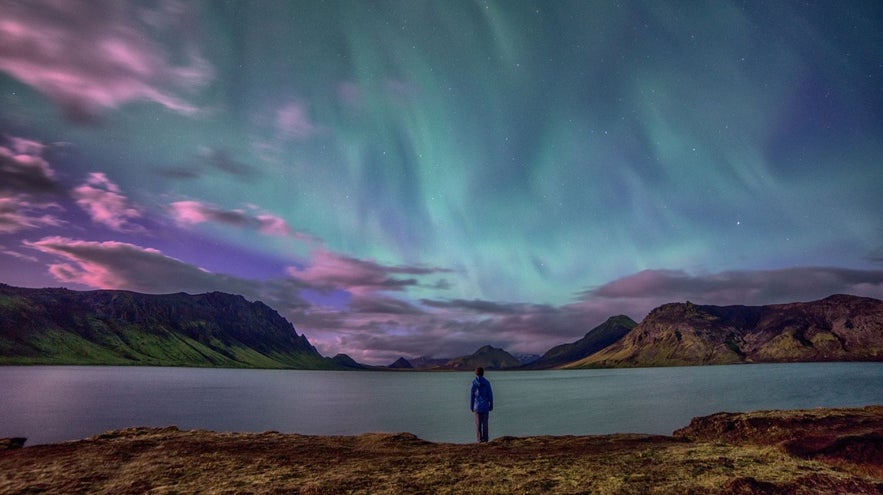 Enthusiastic nature photographers will want to make the most of their northern lights experience, particularly because the lights never appear the same way twice. With each sighting, they reveal a new version of themselves.
Enthusiastic nature photographers will want to make the most of their northern lights experience, particularly because the lights never appear the same way twice. With each sighting, they reveal a new version of themselves.
Given the low light conditions, you'll want to do a bit of prior research before you try photographing the northern lights. Besides your camera, the most important piece of kit to bring is a sturdy and reliable tripod.
One way beginner photographers can make the most of this opportunity is by booking a northern lights tour with a photographer. Not only will they be able to take you directly to the best places to see and photograph the lights, but they'll also offer handy tips and advice on camera settings, focus, and perspective.
Another plus is that Icelanders are known for bringing along a thermos of hot chocolate when they search for the northern lights. Yum!
- Check out this selection of stunning northern lights photos in Iceland
Soaking in Iceland's Natural Hot Springs in November
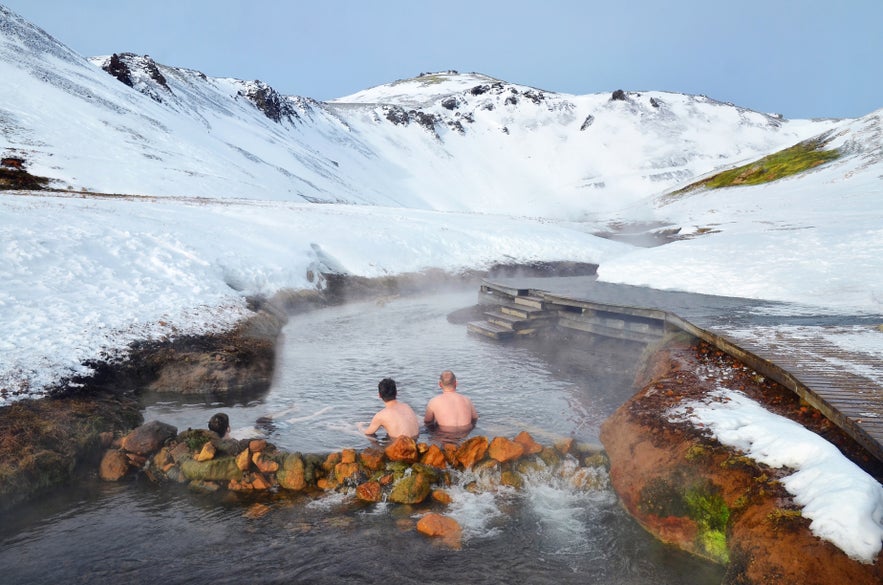 One of the most intoxicating experiences in Iceland (except for maybe the Reykjavik nightlife) is bathing in one of the country’s naturally heated pools. These springs are dotted all around Iceland and are loved by visitors and locals alike.
One of the most intoxicating experiences in Iceland (except for maybe the Reykjavik nightlife) is bathing in one of the country’s naturally heated pools. These springs are dotted all around Iceland and are loved by visitors and locals alike.
Picture this. The weather is cold, maybe even a little snowy. You ease yourself into a natural hot spring, feeling the water warm your cold fingers and toes. You recline, rest your head on the edge, and chat with friends as the sun goes down.
Icelanders spend hours this way, chatting and immersing themselves in the joys of nature. Relaxing in a hot spring is a local ritual that you simply have to try!
What's more, the majority of Iceland’s natural hot springs are in the countryside, away from the city's light pollution. If you spend your evening recharging in a natural hot pool, you might even be lucky enough to see the northern lights.
Getting into a hot spring is simply lovely, but be warned: getting back out into the cold air is nowhere near as pleasant! It's always a good idea to leave your clothes very close by so you don't have to spend too long exposed to the cold Icelandic air. See the short video above for more tips for visiting natural hot springs in Iceland.
Visiting the Blue Lagoon in November
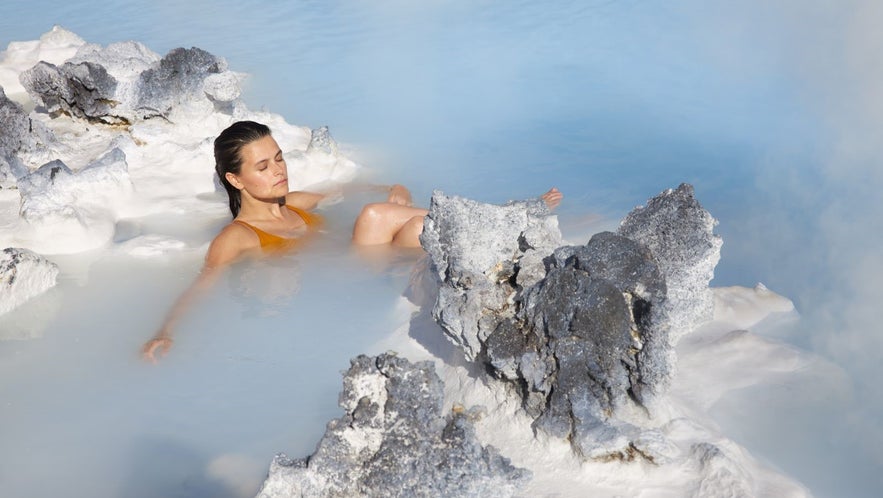 By far, the most famous hot spring pool in Iceland (and maybe the whole world) is the Blue Lagoon. It's well known for its striking, pale-blue waters that are rich in natural minerals. Its water is said to have healing properties, so it's no surprise that the pool has become such a popular spa resort.
By far, the most famous hot spring pool in Iceland (and maybe the whole world) is the Blue Lagoon. It's well known for its striking, pale-blue waters that are rich in natural minerals. Its water is said to have healing properties, so it's no surprise that the pool has become such a popular spa resort.
The Blue Lagoon is open all year round, so you can definitely visit in November. However, it's one of the busiest and most popular places in the whole of Iceland, so you'll want to make sure you book your Blue Lagoon tickets well in advance.
You can choose between the Comfort Ticket, which includes entry, a silica mud mask, and a drink, or the Premium Ticket, which adds extra perks like a robe, slippers, and a reservation at the on-site restaurant. If you turn up without a reservation, you'll almost certainly be turned away.
For more pro tips to make the most of your Blue Lagoon visit, watch the short YouTube video below.
While the Blue Lagoon is the most famous, it’s not the only geothermal spa you can visit in Iceland in November. There's also a popular geothermal spa located within the Capital Region, so it's highly accessible from the city center of Reykjavik. Sky Lagoon is a unique experience, with a hot infinity pool overlooking the ocean and a 7-step ritual to rejuvenate your senses.
For something even newer, Laugaras Lagoon, opened in October 2025 along the Golden Circle, is a modern geothermal spa with cascading pools, saunas, and stunning natural surroundings. Visitors can choose the Birki Pass (Standard), Lerki Pass (Premium), or Osp Pass (Wellness Experience), with perks including access to the lagoon, saunas, and a two-course meal at Ylja Restaurant.
A 50-minute drive from Reykjavik, you can also visit the beautiful Hvammsvik Hot Springs. It's a tranquil location to bathe among nature, and if you book your Hvammsvik admission ahead of time, you can also get this convenient Hvammsvik transfer from Reykjavik. That way, you don't have to worry about driving.
- Discover the best natural springs and geothermal pools in Iceland
- Learn the difference between a geothermal spa and a natural hot spring
- Find out more about the Blue Lagoon vs. Sky Lagoon: Which One Should You visit
Horseback Riding in November in Iceland
Horseback riding in November is excellent fun, but it's important to consider the weather's variability. You could be trotting through grassy farmlands or snow-covered meadows, crossing frozen stretches of land or flooded rivers. But wherever your route takes you, you can guarantee that when it comes to Icelandic horses, you're on reliable hooves.
The Icelandic horse is particularly well-suited to a harsh climate. They have a double coat for insulation from the cold and are muscular and hardy. They're also a friendly and personable breed, so don't be surprised if you get a bit attached to your horse.
Your riding tour guides will provide you with all the right gear to ensure you have the most comfortable experience possible. They'll also run through the basics of horseback riding with you before you start, so you can ride even if you're a beginner. Once that's sorted, it'll be time to pick a horse and head out into the Icelandic countryside.
Horseriding tours in Iceland are available all across the country, and each route offers unique sights. You can also go on a horse riding tour with a transfer from Reykjavik, which keeps planning very simple. The minimum age for horse riding is usually between 8 and 10 years old (depending on the tour provider), and it's common for rides to last between one and two hours.
Whale Watching in November in Iceland

Whale watching is another activity that's available all year in Iceland and one that makes for a pretty exhilarating morning or afternoon. Whales are very common off the coast of Iceland, so it's practically guaranteed that you'll spot some of the marine life that thrives in these waters. In fact, many boat trip operators will give you a second trip for free if you don't see any whales on your excursion.
The Icelandic waters are home to numerous whale species, including humpback whales, orcas, minke whales, blue whales, sperm whales, and fin whales. You might also spot harbor porpoises or white-beaked dolphins.
Whale-watching tours are available from several ports in various parts of the country, but the most popular are in Reykjavik and the "whale-watching capital of Iceland," Husavik, in North Iceland.
However, due to their northern locations, it can be tough to reach Husavik in the winter, so you might be better off sticking closer to the capital during November. Luckily, there are several tour operators running boat trips out from Reykjavik Harbor, such as this 3-hour whale-watching tour.
Avid birdwatchers will also enjoy a whale-watching trip, as you can spot several interesting Icelandic birds soaring above the nation's waters. You could encounter several seabird species, including gulls, fulmars, puffins, and ducks.

- Learn more about the wildlife and animals in Iceland
- Check out the top 10 museums in Reykjavik
Dog Sledding in November in Iceland

Visitors to Iceland in November can enjoy an exhilarating winter adventure: dogsledding! Iceland is the perfect place to try this remarkable experience (and meet some cute pups while you're at it!).
The dogs pulling your sled will be Greenland Dogs or Siberian Huskies. Both breeds are strong, intelligent, and reliable, with a long history of transporting people across snowy terrain. However, Greenland Dogs aren't quite as fast as their Siberian counterparts, but they have higher endurance.
Dogsledding tours in Iceland teach you basic commands and steering techniques, ensuring a safe and enjoyable experience for both you and the dogs. You can watch the video below to see how much care goes into keeping them safe and comfortable.
Sleds are typically pulled by four or five dogs, though this number increases if two people ride together. The fastest dogs can pull the sled at speeds of up to 20 kilometers per hour, giving you a thrilling way to take in Iceland’s winter scenery.
Age limits for dog sledding in Iceland vary from company to company, but the standard age is generally around 16 years old. Children aged 12 and over may be allowed to operate a dog sled, but this will be up to the guide operating your tour.
Glacier Hiking in Iceland in November
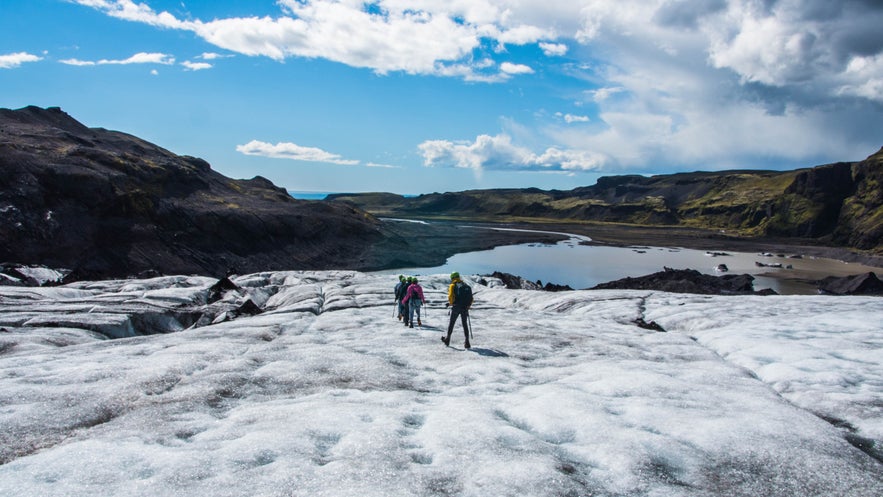
If you're keen on exploring Iceland's great outdoors, a fantastic option is to go glacier hiking adventures. The winter months are obviously the best time to explore Iceland's gigantic ice caps.
Hiking the country's glaciers is an amazing experience. Hikers come face to face with these enormous natural formations, and this truly is the best way to understand the ice's sheer size, power, and age. For example, this glacier hiking tour offers everything you would want from a glacier hike in the beautiful Skaftafell Nature Reserve.
All glacier guides in Iceland are well-trained and highly experienced, and they'll be able to ensure your safety and enjoyment during the hike. Glacier hiking operators in Iceland will supply you with all the necessary equipment, including ice axes, crampons, helmets, and harnesses. They'll take you out onto the glaciers and share their extensive knowledge of glaciology with you. It's fun and fascinating.
Panoramas from the top of Iceland's glaciers are genuinely extraordinary. The vista increases and gets broader the higher you hike. Seeing Iceland from this perspective is a beautiful thing to behold. The most accessible glaciers are located in the south, so make sure to book a hotel in South Iceland to be close to the action.
Snowmobiling in November in Iceland
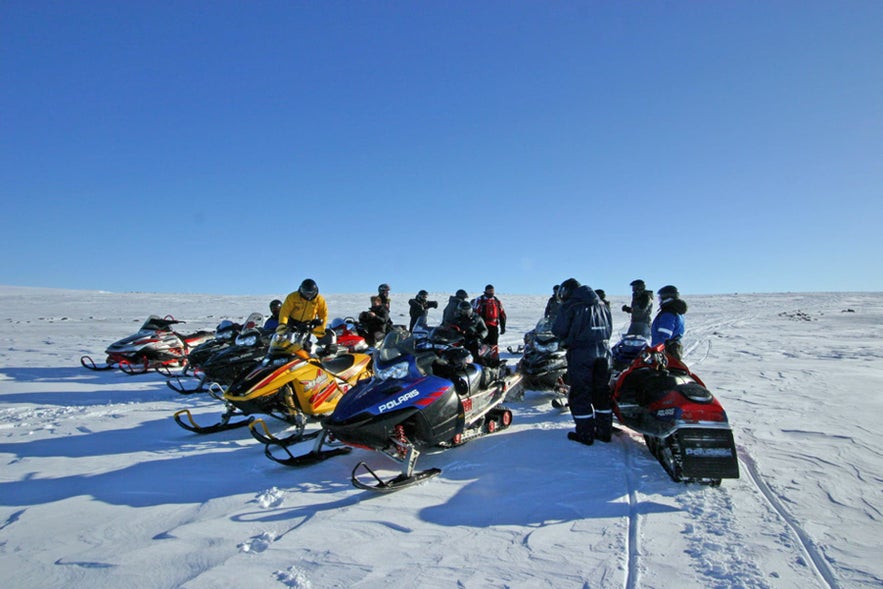 Photo from Combination 9-Hour Golden Circle & Snowmobiling Tour with Transfer from Reykjavik
Photo from Combination 9-Hour Golden Circle & Snowmobiling Tour with Transfer from Reykjavik
Thrill seekers rejoice! November's wintry weather presents the perfect opportunity to go snowmobiling across glaciers. If it's exhilaration you're looking for, you'll be sure to find it. Nothing gets your blood pumping like gorgeous sights at high speeds across snowy plains.
There are a number of different snowmobile tours to choose from. Trips on glaciers such as Langjokull and Myrdalsjokull or the Trollaskagi Peninsula ("Troll Peninsula") are just a few options. Each tour differs from the others, but all of them allow you the opportunity to reach high speeds and get your heart beating faster.
For an unforgettable experience, consider a snowmobile tour on Langjokull Glacier from Gullfoss Waterfall. This activity lets you experience the thrill of racing across Iceland’s frozen landscapes. See the excitement for yourself in the 2-minute video below.
Your guide will tell you how to safely and correctly operate the snowmobile and will provide you with thermal outerwear, helmets, and gloves. However, it's still recommended that you wear some warm layers under them, as it gets cold out here! To snowmobile in Iceland, you must hold a valid driver's license… and have a taste for speed!
Surfing in November in Iceland
It might not be the first activity that comes to mind when planning a trip to Iceland, but it's one that will have massive appeal for high-stakes adventurers: surfing.
Surfing in Iceland is becoming increasingly popular, and the country's surfing community continues to grow as local surfers are bringing this extreme sport into the mainstream.
Fancy giving it a try? Well, you're in luck. November is one of the best months for surfing in Iceland. With wind speeds picking up, so too do the waves, making surfing in Iceland's frigid waters as thrilling as surfing in Hawaii or California.
The biggest difference, of course, is the temperature of the water. You can't just hop in your swimsuit and get in the water. You'll need a 5- to 6-millimeter wetsuit, hood, and gloves if you want to keep your body temperature up while surfing in Iceland.
The vast majority of surfing in Iceland is done off the Reykjanes Peninsula, where the North Atlantic thunders against the craggy volcanic shoreline.
One of the best spots along the peninsula for surfing is Sandvik Beach, where conditions are reliable enough to offer beginner-level breaks and waves, as well as fantastic panoramas of the surrounding landscapes.
Even so, surfing requires a high level of respect for the ocean, as well as a high degree of physical fitness and an unabashed thirst for adventure.
If you are already an experienced surfer, reach out to the local surfing community in Iceland. They'll be able to offer you the best tips and recommendations about safely maximizing your time and finding the waves to match your skill level.
Snorkeling and Scuba Diving in November in Iceland
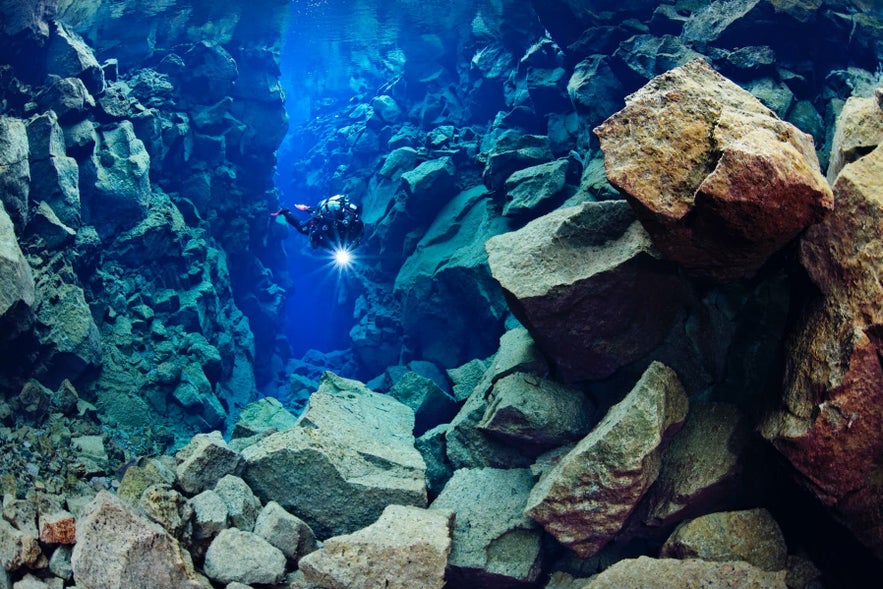 Photo from Incredible 3 Hour Guided Drysuit Diving Tour in Silfra with Hot Drinks.
Photo from Incredible 3 Hour Guided Drysuit Diving Tour in Silfra with Hot Drinks.
The idea of diving and snorkeling in Iceland might seem strange, maybe even unbelievable, especially during winter. But Iceland is home to the world-famous Silfra Fissure, one of the greatest snorkeling sites on the planet. Silfra Fissure is the single most popular diving and snorkeling spot in Iceland.
Snorkeling and scuba diving tours are available all year at Silfra Fissure, meaning there's no reason to pass up this once-in-a-lifetime opportunity, even if you're visiting Iceland in November.
Silfra Fissure is not world-famous for its wildlife, nor its caves or potential to explore, but for its crystal clear visibility. Centuries-old glacial water trickles down from the mighty Langjokull Glacier, being purified as it winds its way through the dark volcanic rock networks at Thingvellir National Park before spilling out into the fissure to form a spellbinding canyon of blues and greens.
Thanks to the light current that runs through it, Silfra Fissure never freezes, not even in the dead of winter!
The current of light also helps keep Silfra's water clear. Even if a snorkeler or diver in the group in front of you accidentally kicks up some sediment, the water will be clear again in just a few moments. With the sun's rays pouring down from the surface, visibility can often reach up to 100 meters.
If you plan to take a snorkeling or diving trip in Silfra Fissure, you'll be in good hands. All the guides at Silfra Fissure are experienced and personable. They'll stick to a six-to-one customer-to-guide ratio to ensure a safe and personalized experience.
Before you enter the water, your guides will give you a thorough briefing on what to expect in the water, including how to use your equipment and how to stay insulated from the cold. They'll even help you to get dressed to make sure you've done it right.
Diving in Iceland is an amazing opportunity and one that shouldn't be missed.
Lava Caving in November in Iceland
 Photo from Amazing 8-Hour Caving & ATV Combo Package with Transfer from Reykjavik
Photo from Amazing 8-Hour Caving & ATV Combo Package with Transfer from Reykjavik
November is one of the best times for lava caving in Iceland. The colder temperatures create delicate ice formations along the rocks, offering a striking contrast of fiery red and sky blue. Caving is especially appealing in winter, which offers shelter from the cold and unpredictable weather outside.
Popular caves to explore in November in Iceland include Vatnshellir, Vidgelmir, and Raufarholshellir Lava Cave. Inside, you can see ancient stalagmites and stalactites, magma columns, and paleochannels. These are the petrified paths of ancient underground lava rivers. Some caves even contain remnants from the Settlement Age, offering a glimpse into early Icelandic animal husbandry.
Those who dare to enter this enchanting subterranean world will gain a deeper understanding of Iceland’s geological makeup. Your guide will explain how the caves formed and how mythical Icelandic outlaws once used them for shelter.
At one point, you may even be asked to turn off your headlamps while seated in the bowels of the cave to experience the pitch-blackness surrounding you!
How To Get Around Iceland in November
So, now that you know what you might want to do in Iceland in November, you might be wondering about the best way to get around.
Arriving in Iceland
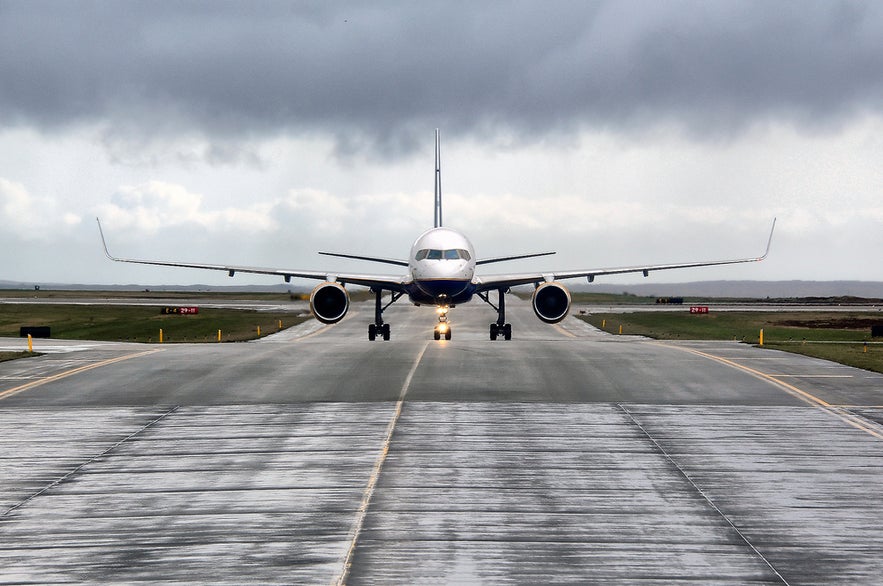
If you're traveling to Iceland in November, you're in luck—flights to Iceland at this time of year are usually considerably cheaper than at other times of the year. If you book your tickets a few months in advance, tickets shouldn't cost too much at all.
For round-trip flights from the US, the summer rate is usually double the rate in November, so it's definitely easier on the wallet to travel to Iceland during this time of year. The price dip also goes for the vast majority of international gateways, so there's an opportunity to save money for everybody.
The reason for this discrepancy? November isn't within the peak season in Iceland. But don't let that put you off visiting. Those who arrive in November will find fewer crowds, a wider choice of hotels in Iceland, and a unique winter wonderland almost entirely to themselves.
Traveling Around Iceland in November
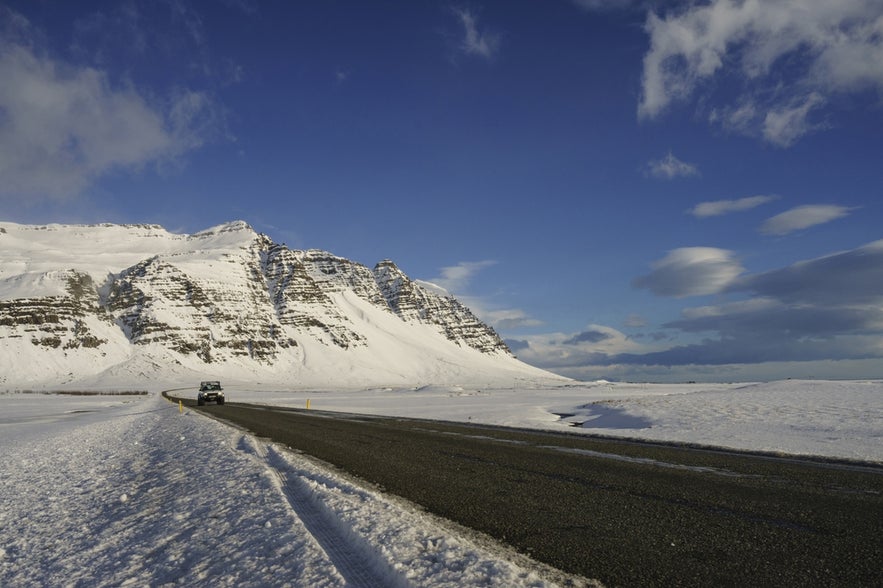 The Ring Road, Iceland’s main highway that circles the country, is usually cleared of snow and ice regularly. A self-drive tour of the Ring Road in November is possible, as all rental cars are legally required to have winter or studded tires, which provide much-needed traction on icy roads. However, conditions can still be more challenging in the northern parts of the country, so extra caution is advised.
The Ring Road, Iceland’s main highway that circles the country, is usually cleared of snow and ice regularly. A self-drive tour of the Ring Road in November is possible, as all rental cars are legally required to have winter or studded tires, which provide much-needed traction on icy roads. However, conditions can still be more challenging in the northern parts of the country, so extra caution is advised.
Driving in Iceland in November can be dangerous, especially if you plan to venture off the Ring Road onto smaller or more remote roads, which are often not plowed or gritted in winter. If you’re uncomfortable driving in wintry conditions, joining an organized tour is a safe and convenient way to explore the country, including areas that can be tricky to reach on your own.
- Read the complete guide to road trips in Iceland
- Discover the best attractions by the ring road of Iceland
Tours that Operate in Iceland in November
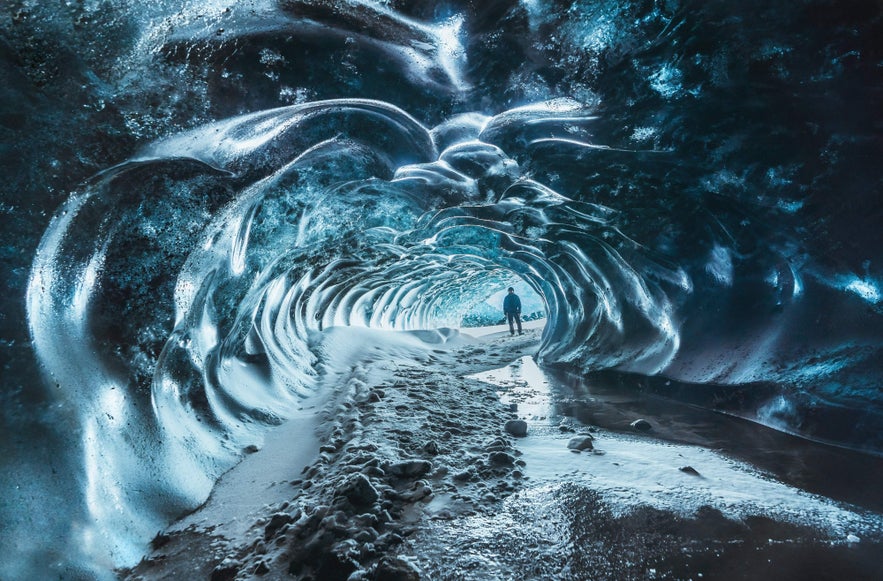
Most summer tours and autumn adventures in Iceland are still available, so you can enjoy a wide range of experiences in November. Even in November, you can take part in some of Iceland’s most popular and unique tours.
Winter excursions offer a fresh perspective on the country’s landscapes, showcasing Iceland’s seasonal diversity and remarkable opportunities for adventure. Cold temperatures aren’t a problem, as tour operators provide thermal wear to keep you warm. Activities like winter horseback riding, diving in Silfra, or glacier hiking in Skaftafell can be just as comfortable as in summer.
- See Also: Tours and Vacation Packages in Iceland
What’s Going on in November in Iceland?
November is a good month to visit for those who want to get deeper into the local culture, especially if you're a big music lover. The weather in November might be cold, but the top live music venues of Iceland are ablaze with events to keep things hot!
Iceland Airwaves
Iceland Airwaves is the country’s biggest and most beloved festival, attracting both local and international talent, as well as music fans from all over the world. For three melodious days and nights, the country transforms into a musical composition itself, with almost every establishment—cafes, bars, art galleries—showcasing incredible performers.
Rolling Stone writer David Fricke called Iceland Airwaves "the hippest long weekend on the annual music festival calendar." Jonah Flicker of Pitchfork Magazine cited the festival's "unbelievable zest for music and celebration." What more could you want?
The festival has come a long way since its first appearance in 1999, which was held in an aircraft hangar at Reykjavik Airport. These days, it's known for its good-time atmosphere, intimate performances, and wealth of new talent. Iceland Airwaves has become one of the premier events of Reykjavik's social calendar, attracting music journalists and scouts worldwide.
Previous line-ups have included a mix of Icelandic artists like Bjork, Of Monsters and Men, and Sigur Ros, to name just a few, and international artists, including The Flaming Lips, Fatboy Slim, and Vampire Weekend.
Grab a ticket and get ready for great music and great fun!
- See Also: Music in Iceland
- Find out more about Reykjavik’s nightlife scene
Icelandic Language Day: November 16
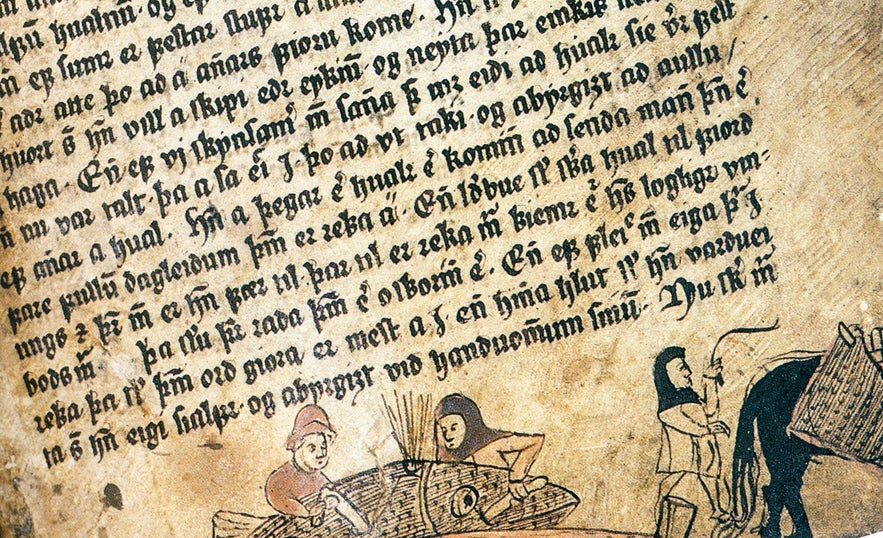 November 16 is Icelandic Language Day, a celebration of the country's unique language and a reminder of the importance of preserving it in a global age. The holiday has been celebrated since 1996, and its name translates literally to "day of the Icelandic tongue."
November 16 is Icelandic Language Day, a celebration of the country's unique language and a reminder of the importance of preserving it in a global age. The holiday has been celebrated since 1996, and its name translates literally to "day of the Icelandic tongue."
The Icelandic language has an incredibly complex declension system. I It's noted for its use of neologism (as opposed to using foreign loan words). For example, the Icelandic term for a computer is "tölva," comprised of the words "to count" and "oracle."
Icelandic Language Day coincides with the birthday of the beloved Icelandic poet and naturalist Jonas Hallgrimsson (16 November 1807 – 26 May 1845). He was one of the founders of the Icelandic-language journal Fjolnir, published in Copenhagen between 1835 and 1847. This journal played a key role in obtaining Iceland's independence from Denmark.
On November 16, Icelanders, especially Icelandic youth, are encouraged to speak only in Icelandic. Many cultural and educational exhibitions are hosted at venues around Reykjavik, including the beautiful Harpa Concert Hall. There are also many awards handed out to those who have helped promote Icelandic literature and language over the last year.
Advice for Visiting Iceland in November
It's never good to be caught unaware when traveling, but this is particularly true when visiting a near-Arctic country in winter. Good preparation is key if you want to have an enjoyable trip, so here is some good advice for anyone visiting Iceland in the early winter.
Pack Your Thermals
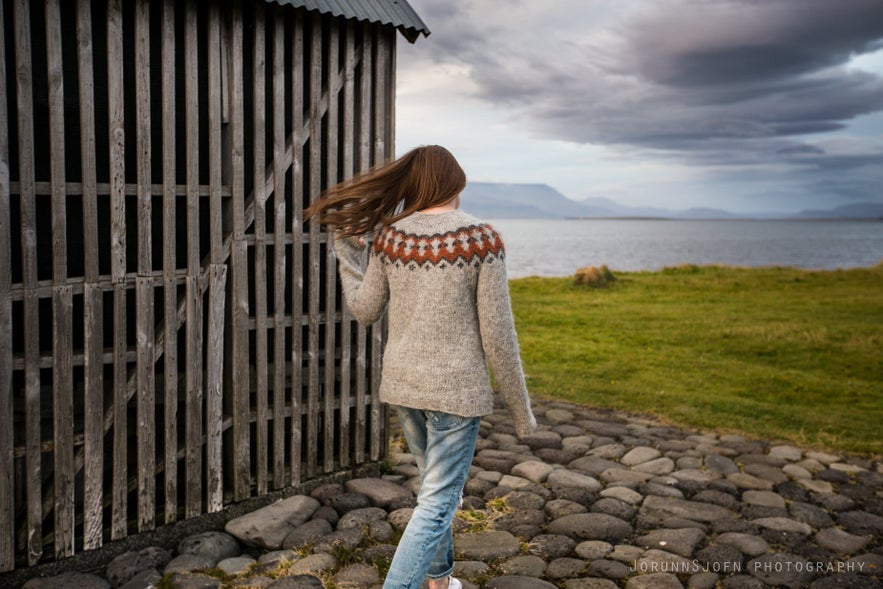
It should go without saying, but Iceland in November is cold. It's the beginning of winter, and as your trip progresses, the temperature is going to drop.
With that in mind, you'll want to wear several layers of thermally protective clothing if you want to ensure that the harsh climate doesn’t get in the way of enjoying your time here.
In fact, November is as good a time as any to purchase a "lopapeysa", a traditional Icelandic sweater. The wool that's used for lopapeysa is woven from unspun Icelandic sheep wool, called lopi. It's fantastically warm (the sheep need to protect themselves from the cold, too!) and water-resistant, so perfect for days out in the snow.
The lopapeysa has since gone through a few fashion revivals. For example, in 1944, it became a national symbol celebrating Iceland's independence from Denmark. The second followed the fallout of the 2008 financial crisis.
The lopapeysa is an Icelandic tradition and is often used to celebrate Icelandic identity. Its warmth, unique patterns, and cultural significance make it one of the best souvenirs to take home from Iceland.
Avoid Mountain and Gravel Roads

During November, you won't be able to access Iceland's interior highlands. However, the vast majority of attractions are still on offer, especially those dotted around the Ring Road.
Driving in November comes with hazards. Thanks to the deteriorating weather, you're likely to encounter thick fogs, blizzards, and heavy rainfall at some point along your journey.
To keep safe in these treacherous conditions, it's important to always leave ample room between your car and the car in front and to refrain from speeding. Iceland’s main country roads are often long, empty, and temptingly wide, but it's crucial that you drive carefully.
It's also worth noting that off-road driving in Iceland is illegal. If you do it, you'll be punished with a hefty fine. Not only is driving off-road unsafe, but it also irreversibly damages the delicate balance of the country’s natural environment.
Don’t Assume That You’ll See the Northern Lights
Practically everyone visiting Iceland wants to see the northern lights, and it's easy to see why. In general, November is an excellent time to see the aurora, but there's no guaranteeing what the cosmos will be up to on any given night. The lights are notoriously elusive, and there's always a chance that you'll be disappointed.
Northern lights tour operators always let their customers know well in advance if the hunt for the lights is likely to prove fruitless. Although it can be disappointing to pay for a tour and not see them, try to make the most of it and enjoy learning about the starry night sky above.
Explore Reykjavik Cafe Culture
Icelanders are avid coffee drinkers, with the average Icelander getting through almost 20 pounds (9 kilograms) of coffee beans every year.
In fact, Icelanders love their coffee so much that you’ll sometimes find free coffee in local supermarkets, banks, and retailers. Some Icelanders even use the leftover grounds to scrub their skin after a wintry dip in the North Atlantic!
It should come as little surprise, then, that some of the best cafés in Reykjavik can be found on almost every street corner downtown. Many cafés offer free refills, so guests can sit back, soak up the city's creative atmosphere, and while away the hours in a cozy corner. Heaven!
Icelandic coffee culture is personalized, community-driven, and fiercely competitive. This means you're pretty much guaranteed to enjoy a cup of some of the highest-quality roasted coffee found in the world.
Frequently Asked Questions About Visiting Iceland in November
Planning a trip to Iceland in November comes with unique considerations, from winter weather to limited daylight and seasonal activities. Here are answers to some of the most common questions about visiting in November to help you make the most of your Iceland experience.
How cold does it get in Iceland in November?
Average temperatures in Reykjavik range from 1C to 8 C (33 F to 46 F), while northern and inland regions can be colder. Expect snow, sleet, and wind at times. Dressing in layers, including thermals, waterproof jackets, hats, and gloves, is essential for staying warm during activities.
Can I see the northern lights in Iceland in November?
Yes! November offers long nights and increased chances to see the aurora. Heading outside city lights or joining a northern lights tour improves your odds.
What time does it get dark in Iceland in November?
Early November sees about 8 hours of daylight, but by late November, daylight drops to around 5 hours, with the sun rising around 10:00 AM and setting at 4:00 PM.
Is the Blue Lagoon open in November?
Yes, the Blue Lagoon is open year-round, including November. If visiting, booking in advance is recommended due to high demand.
Can I drive in Iceland in November?
You can, but winter conditions make some roads hazardous. Only drive on plowed roads with a properly equipped vehicle, or consider guided tours for safety.
Can I see whales in Reykjavik in November?
Yes! Whale-watching tours operate year-round from Reykjavik, with high chances of spotting humpbacks, orcas, and other marine life.
How expensive is it to travel to Iceland in November?
Travel is generally cheaper in November than in summer. Flights, hotels, and tours tend to cost less, making it a more budget-friendly time to visit.
Recommended Itineraries for November
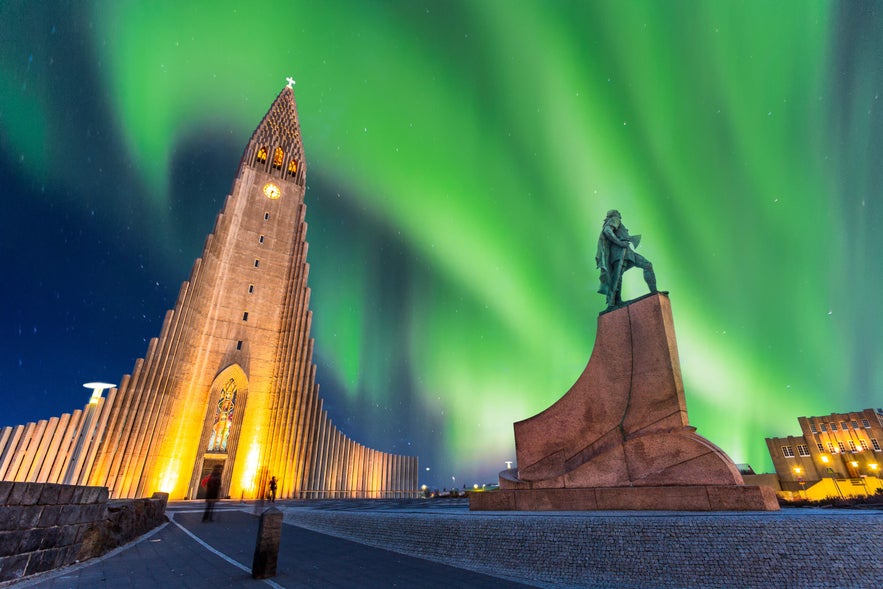 Whether traveling for four days or three weeks, following an itinerary is a great way to ensure you're getting the best out of your time in Iceland. To help you do just that, we've put together a list of some of the best itineraries for November in Iceland. Check them out.
Whether traveling for four days or three weeks, following an itinerary is a great way to ensure you're getting the best out of your time in Iceland. To help you do just that, we've put together a list of some of the best itineraries for November in Iceland. Check them out.
Are you planning to visit Iceland in November? If you've already been, how was your holiday experience in November in Iceland? We'd love to read about your time here in the comment section below.


